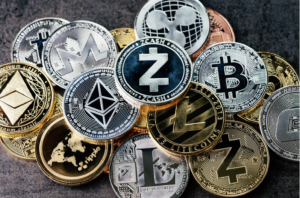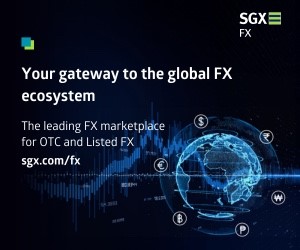Fidelity Finds Increased Investor Interest in Crypto…Just
Posted by Colin Lambert. Last updated: October 28, 2022
The fourth annual Fidelity Digital Assets Institutional Investor Digital Assets Survey finds that 58% of the just over 1,000 surveyed were invested in digital assets in the first half of 2022 – a 6% increase.
There is, perhaps, a hint at what might be a disappointing number for those seeking quicker institutional growth in crypto in Fidelity’s observation that turbulent market conditions “may have impacted some institutional investors’ impression of digital assets”. It adds, however, “…the trend points to continued interest in the digital assets space overall”.
While digital assets ownership is higher among respondents in Asia (69%) than in Europe (67%) or the US (42%), Europe saw an 11-point increase in ownership, while the US saw a nine-point increase in ownership, since 2021. In both regions, the uptick was driven largely by high-net-worth investors, Fidelity says, as well as financial advisors in Europe. Globally, digital asset usage is highest among high-net-worth investors (82%) alongside crypto hedge funds and venture capital funds (87%), and financial advisors (73%).
“The increased adoption reflected in the data speaks to a strong first half of the year for the digital assets industry,” says Tom Jessop, president of Fidelity Digital Assets. “While the markets have faced headwinds in recent months, we believe that digital assets fundamentals remain strong and that the institutionalisation of the market over the past several years has positioned it to weather recent events.
“Institutional investors are experienced in managing through cycles, and the largely inherent factors that they cited as appealing in this study will likely remain as the market emerges from this period,” he adds.
According to the study, 88% find characteristics of digital assets appealing, representing an increase of five points among US institutional investors and two points in Europe, while holding steady in Asia. Fidelity says respondents noted high potential upside; innovative tech play; and enabling decentralisation as the most appealing features of digital assets. Overall, 51% have a positive perception of digital assets, up from 45% in 2021.
Fidelity says as the digital assets market and ecosystem continues to mature, fewer institutional investors now view these assets as an alternative asset class, particularly in the U.S. and Asia. This may be unsurprising given how the major cryptocurrencies in particular have first correlated strongly with equities, and then been subject to a serious dampening of price volatility compared to historical levels. The survey finds that less than one-third of US and Asian institutional investors surveyed share this belief, a 13-point and 15-point drop from 2021, respectively. Additionally, 35% of respondents believe digital assets should be viewed as an independent investment class, up from 23% in 2021.
“Possibly even more prominent a focus given recent market activity, price volatility remains the primary barrier to adoption”
While the findings show continued interest and exploration in digital assets, institutional investors not yet invested in digital assets see several barriers to adoption. Consistent with 2021 survey results, price volatility remains the biggest barrier to consider, noted by half of respondents. Lack of fundamentals to gauge value, security concerns among institutions and end-clients, market manipulation risks, complexity, and regulatory concerns were all cited by at least one-third of respondents as a reason why they do not currently invest in digital assets.
“Possibly even more prominent a focus given recent market activity, price volatility remains the primary barrier to adoption,” says Chris Kuiper, director of research for Fidelity Digital Assets. “While short-term price fluctuation is a characteristic somewhat inherent to this emerging asset class, many of the other concerns cited by respondents can be addressed as institutional investors move through their journey of education, which is why we’re now more committed than ever to providing investors with resources that deepen their understanding and allow for thoughtful long-term investment consideration.”
That said, 81% of respondents believe that digital assets should be a part of an investment portfolio as of the first half of the year, with 39% of those globally who invest in these markets do so directly, up from 34% in 2021. Bitcoin and Ether were noted as the most popular direct investment assets.
Ether ownership in the US increased five points year-over-year, while remaining consistent in the other markets – 35% of respondents buy investment products holding digital assets, 30% buy investment products holding digital assets companies, and 20% gain exposure via futures contracts. Respondents also indicated an appetite for new products: 52% of Asian investors, 47% of European investors, and 43% of US investors found the concept of a Bitcoin ETF appealing, with actively managed multi-digital asset funds and passive multi-digital asset funds ranking highly as well.
Fidelity says that commitment to the space was evident in respondents’ outlook for the future based on the first half of 2022, with 74% of institutions surveyed planning to buy digital assets in the future. Future purchase intent increased in Europe and the US compared to 2021, increasing five points and seven points respectively, due in part to substantial gains in future preference to buy among financial advisors (Europe) and high-net-worth investors (U.S.). Globally, future preference to buy remained consistent year-over-year for financial advisors, family offices, pensions, crypto hedge funds and venture capital funds, and endowments and foundations.



